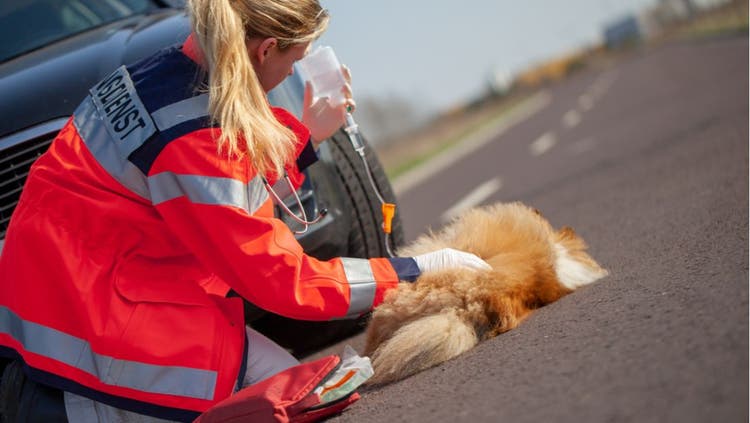
How to Approach an Injured Dog Safely
How to Safely Approach a Dog that Has Been Injured
If you encounter a dog in need or injured in some way, your first reaction may be to run to help. That’s a common reaction – most people don’t want to see an animal in pain. But without taking the proper precautions, you could get injured. And being injured along with the animal won’t help the situation.
It is important to remember that even the sweetest dog may bite if she is frightened or in pain. Here are some guidelines for approaching an injured pet.
Assess the Situation – Approaching the Injured Dog
Use common sense: Remember that your safety comes first.
- If the dog is in the middle of the road, watch for traffic before going to assist.
- If there is a house fire, do not enter the house until the fire department has eliminated the danger – very likely firefighters will rescue the dog.
- If your dog has fallen, make sure no more items are ready to fall on you.
- If your dog is covered in a toxic substance, do not touch the animal unless you are wearing protective gloves or can cover him with plastic (or some other protective material).
- If your dog is covered in blood, do not touch the animal without protective gloves. Even though there are few diseases you can get from animal blood, there is no guarantee that human blood is not mixed in from someone else. That person’s blood may have spilled onto the animal, and with the threat of HIV, hepatitis or other illnesses, exposure to any blood is not recommended.
Determine If the Injured Dog is Aggressive
If the animal shows signs of fear or aggression, muzzling him is essential before helping. As you approach the animal, pay attention to his body language and any sounds he is making. Use a soft, gentle, calming voice. Avoid direct eye contact with an injured pet since some will perceive this as a confrontation or threat. A wagging tail is irrelevant. Some dogs with wag their tails throughout an attack.
Here are some body language signals to look out for:
- Growling
- Snarling with teeth exposed
- Hair along back standing on end
- Ears straight back and flat against head
- Tail tucked between legs
- Lunging toward you with snapping jaws
- Intense staring
- Submissive behavior such as lying on ground with belly exposed (these dogs can quickly become fear-biters)
Remember, keeping yourself safe and uninjured is just as important as helping the injured animal. You cannot be much help if you also need medical assistance.
If the animal you are trying to help is aggressive and there is a risk that you may get injured, do not try to administer treatment. Call a local animal shelter, humane society, veterinary clinic, animal control officer or police department.
Try to stay nearby to watch where the animal goes and to assist when help arrives. If necessary, direct traffic away from the injured animal until further help arrives.
Is Pet Insurance Right for you?
The best pet insurance offers coverage that’s broad enough for whatever care your pet needs and with enough options to get the perfect coverage for you and your pet.
Are you pet crazy? Sign up for our email newsletter and get the latest health and wellness info, useful tips, product recalls, fun stuff, and so much more!